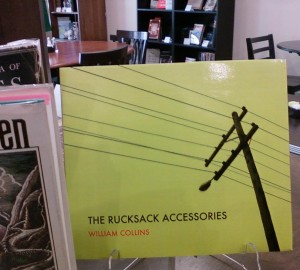Fights at the Friendly Tavern? Are they pillow fights? I had to know more.
I sell words bound in volumes. That’s probably why I have such a tough time with the quality of writing on the internet, much of which is horrendous (including most of the columns here).
That’s not to say that bad books don’t exist, but normally an editor is involved to some degree in book publishing.
This example from Tulsa’s Channel 8 website should not have escaped a junior-high English class.
Man Stabs Wife at Bar
As a headline, this is totally acceptable. As an example of spousal affection, it is totally reprehensible.
A woman is stabbed by her husband at an east Tulsa bar.
A woman is stabbed? A woman is beautiful, maybe. A woman is wealthy. A woman is intelligent. A woman is elderly. A woman is stabbed? Sounds a lot like a CSI recounting of an event.
CSI Rookie: Okay, here’s how I see it. Some whiskey is consumed. Some words are exchanged. A woman is stabbed. A man runs off. We got ourselves a murder.
CSI Veteran: She ain’t dead, Frank.
CSI Rookie: Oops. An ambulance is called.
Back in the days when teachers taught students to diagram sentences to show the various parts, the above example would have proven difficult. A few years ago, some consultant told broadcasters to write in the present tense to make it sound more urgent. Here’s a news flash. It doesn’t work. The practice just makes for bad English. Channel 8, I believe, is the leading practitioner of the style. Present tense? How about: A woman is expected to survive after being stabbed at an east Tulsa bar. If you are talking to a friend (and hopefully Channel 8 newsfolks consider us as such) wouldn’t you just say:
Friend: A woman was stabbed by her husband.
Pal: An ambulance is called.
Police were called to Friendly Tavern on east 31st Street around 1:30 Wednesday morning.
Despite the admonitions of the consultant, our author has reverted to past tense for the second sentence/paragraph, which reads just fine but suffers for punctuation. The AP Stylebook advises the capitalization of directions when used as part of a street address: “on east 31st” should have been written “on East 31st.” But that’s nitpicking, and forgivable. The injection of irony is also admirable.
Friend: Where did the man stab his wife?
Pal: Friendly Tavern.
Friend: Sure it is, but where was she stabbed?
Pal: Oh. In the back. An ambulance is called.
Officers tell KTUL.com that the man stabbed his wife in the back and ran off. It’s unclear if a fight lead up to the violence.
Moving back to present tense, the “Officers tell” rather than “Officers told KTUL.com…” which is only an issue in that – from a continuity standpoint – it might better serve the readers if the author could pick a tense and stand by it, rather than stab it in the back and run off.
As to the second part of the paragraph, I have a suspicion that most stabbings are the result of a fight between two parties. In fact, I believe it to be true (although not researched formally here) that – without the violent fight aspect – a stabbing is called impaling. I suppose there are accidental stabbings, after which the knife-wielding party always runs off.
As to whether “a fight lead up” to the violence: When you’re hit over the head, the instrument could be a “lead” pipe. But when it’s a verb, “lead” is the present and “led” is the past tense. The problem is that – in broadcasting – the past tense is pronounced exactly like the above-mentioned plumbing material, so people – including broadcast writers – often confuse the two. In a sentence like “She led us to the scene of the crime,” or “It’s unclear if a fight led up to the violence,” always use the three-letter spelling.
The man surrendered to police later in downtown
Sticking to past tense, our author achieves a credible relating of fact here, although, lacking a sentence-ending period, the reader cannot be certain if the man surrendered to police later in downtown Oklahoma City or downtown Tulsa. If the location is assumed to be Tulsa, perhaps the sentence would have been better served by omitting the word “in.” The man later surrendered to downtown police. Even if that doesn’t work exactly – there should have been a period. Markings are important, even in broadcast media. Try reading this without the appropriate punctuation:
a woman without her man is nothing
The stabbed woman certainly won’t agree with the implied sentiment there, but add a little punctuation…
A woman: Without her, Man is nothing.
You see, the little marks make a big difference.
His wife should survive her injuries.
We’re back in the present, and – although tense – even the recovering wife might approve that sentence.
There are a number of ways that the story could have been correctly written, and I’d offer some examples – but at this point, the story is old news and doesn’t require repeating.

